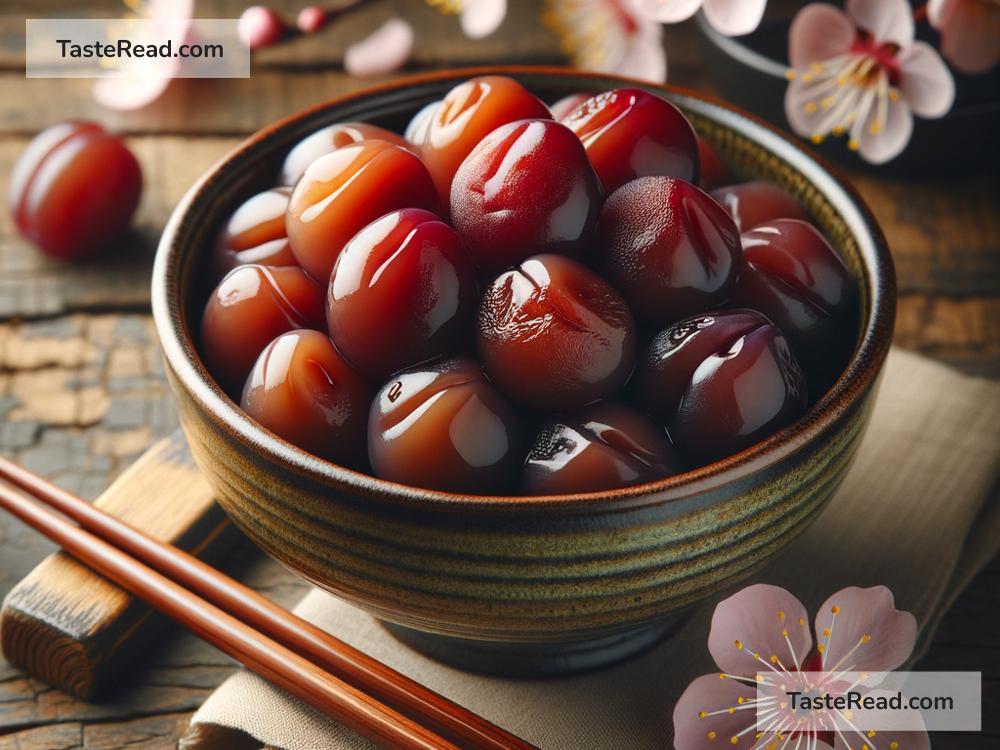Discovering the World of Japanese Pickled Plums: A Journey into Flavor
Japanese cuisine is renowned worldwide for its sushi, ramen, and wagyu beef. But hidden within this rich culinary tradition is a unique delicacy that often goes unnoticed by many outside Japan: Japanese pickled plums, or “umeboshi.” These pickled treats are more than just food; they are a window into Japanese culture, history, and a testament to the art of preserving flavors.
What is Umeboshi?
Umeboshi is a traditional Japanese pickle made from ume fruits, which are often mistaken for plums but are closer to apricots. The process of making umeboshi involves drying the ume fruits in the sun and then pickling them in salt and leaving them to ferment. Some recipes also include shiso leaves, which add a beautiful red color and a minty flavor. The end result is a salty, sour, and slightly sweet plum that packs a punch in terms of flavor and nutritional benefits.
A Deep Dive into Umeboshi’s Rich History
The history of umeboshi in Japan goes back centuries and is closely tied to the country’s samurai warriors, who carried these pickled plums as field rations. Umeboshi were prized for their ability to combat fatigue and purify water. In a time before modern preservatives and refrigeration, umeboshi served as a vital means of preserving food. Over the years, they have become a staple in Japanese households, not just for their longevity but for their health benefits and distinct taste.
The Health Benefits
Part of what makes umeboshi a standout in the world of pickles is its reputed health benefits. These little plums are powerhouses of nutrition, packed with antioxidants, minerals, and beneficial acids. They are believed to aid in digestion, promote liver health, and even help in the fight against aging. It’s no wonder that umeboshi has found its place in the daily Japanese diet, often served alongside rice or included in bento boxes as a natural preservative and flavor enhancer.
Umeboshi in Japanese Culture
Umeboshi holds a special place in Japanese culture. It’s not just food; it’s a symbol of endurance and perseverance, reflecting the Japanese ethos of facing challenges with resilience. Its presence in the traditional Japanese breakfast or in bento lunches is a constant reminder of the simplicity and depth of Japanese culinary tradition. Apart from its use in meals, umeboshi also makes appearances in Japanese drinks, candies, and even as a flavoring in sauces.
Cooking with Umeboshi
If you’re feeling adventurous and want to try incorporating umeboshi into your cooking, there are countless ways to do so. For starters, you can chop up an umeboshi plum and mix it into a bowl of steamed rice for an instant flavor boost. Umeboshi also pairs wonderfully with avocado on toast, adding a delightful tartness that complements the creaminess of the avocado. For those into salad dressings and sauces, umeboshi paste is an excellent base that gives your dishes an unexpected zing.
Exploring the World of Umeboshi
Today, umeboshi can be found far beyond the borders of Japan, in Asian supermarkets and online stores around the world. There are various types of umeboshi to explore, from the intensely sour to the slightly sweet, and even low-salt versions for the health-conscious. Each type offers a different experience and allows you to dive deeper into the nuanced world of Japanese flavors.
In Conclusion
Japanese pickled plums, or umeboshi, are more than just a traditional food item. They are a testament to the creativity, history, and resilience of Japanese culture. Exploring the world of umeboshi opens up new culinary territories, offering flavors that challenge and delight the palate. Whether you are a seasoned chef or a curious food lover, umeboshi invites you to discover the rich tapestry of Japanese cuisine in the most unexpected of places — a tiny, pickled plum.


